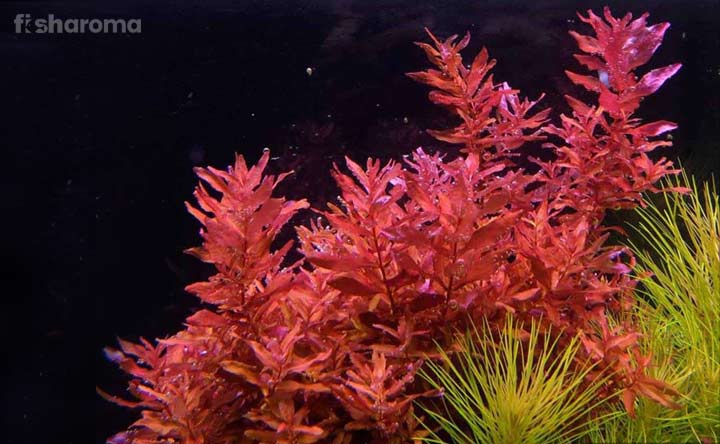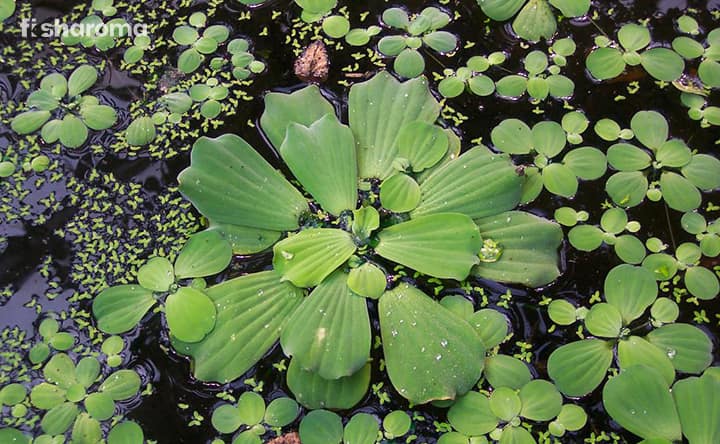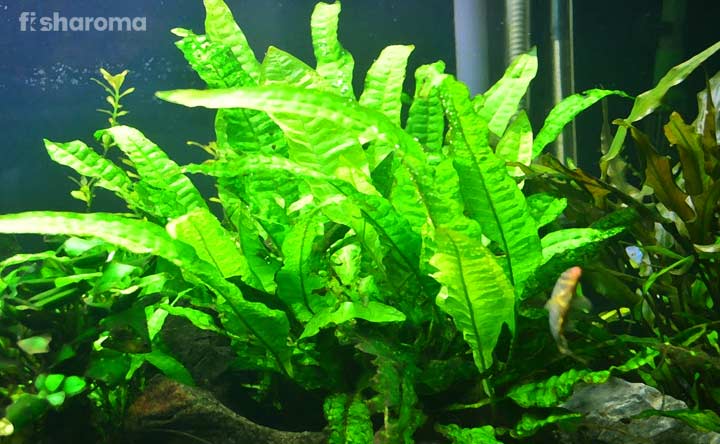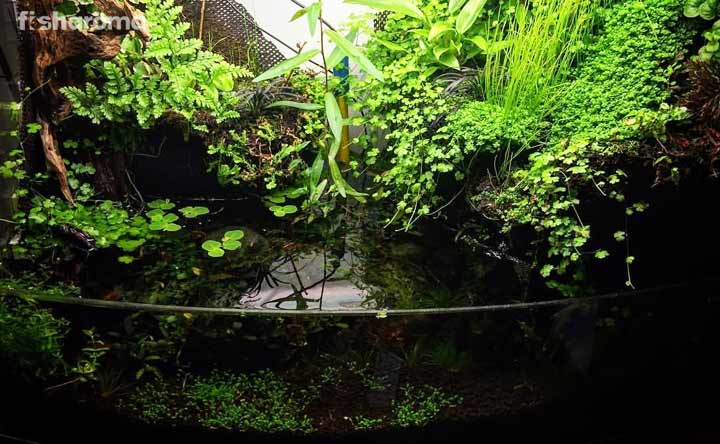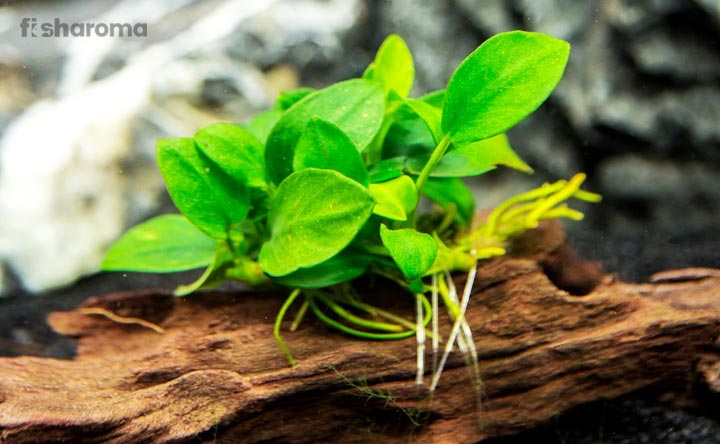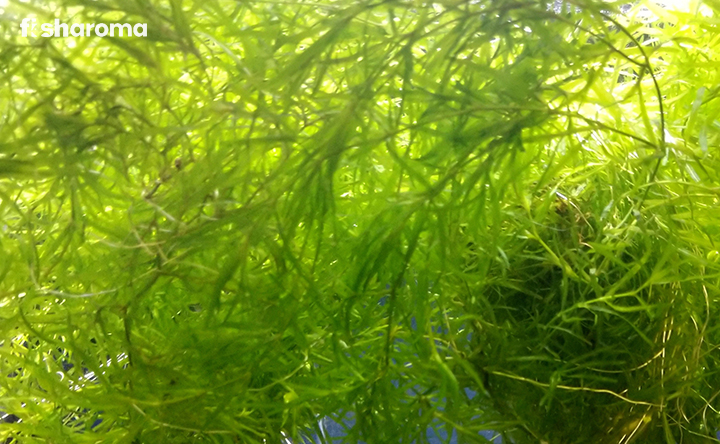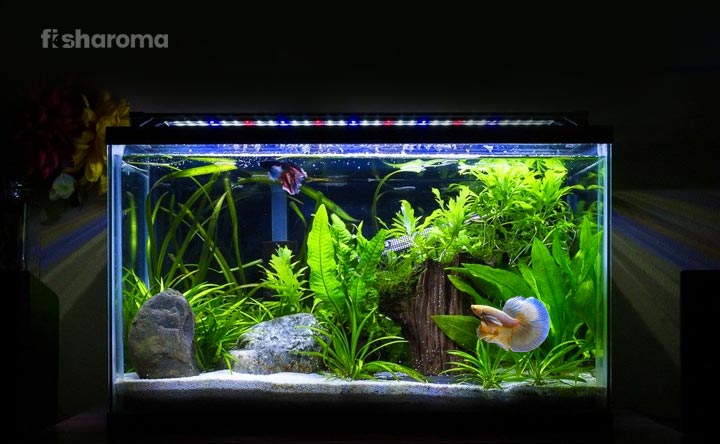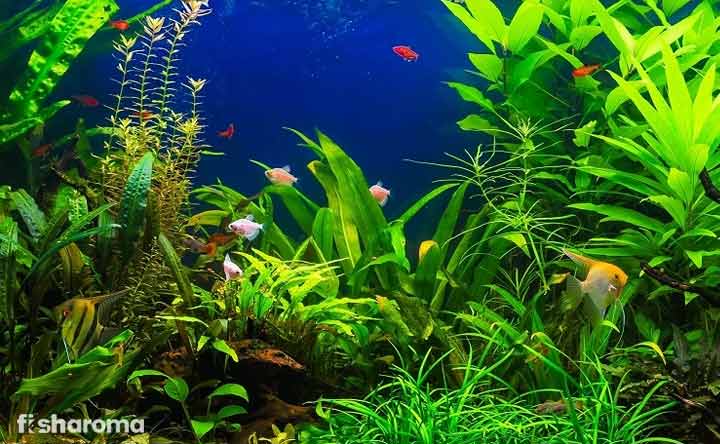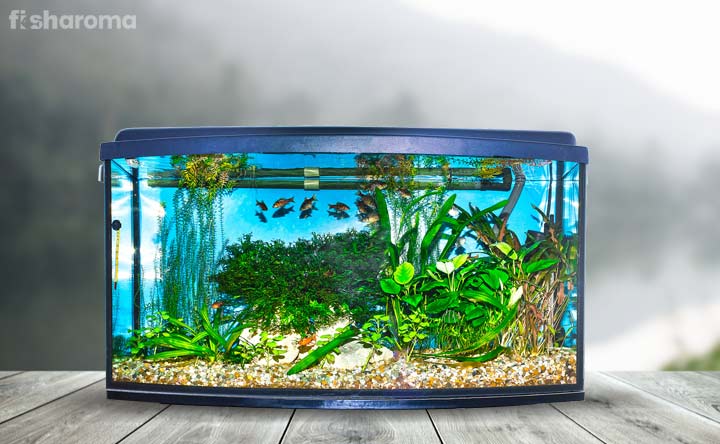Dwarf Sagittaria- Care Guide To The Awl-leaf Arrowhead
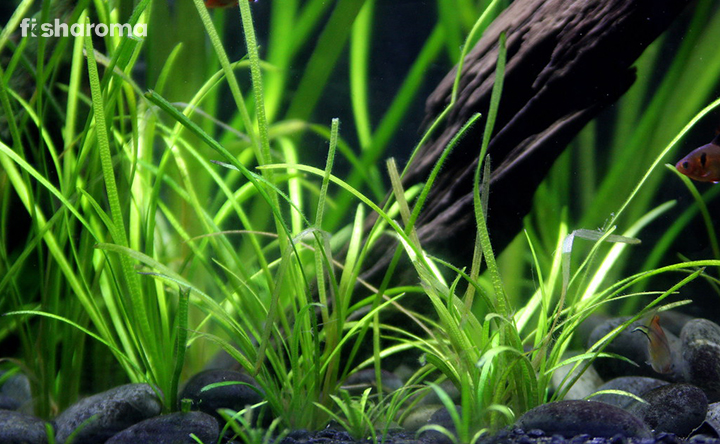
- Origin & Habitat of Dwarf Sagittaria
- Appearance of Dwarf Sagittaria
- Benefits of Dwarf Sagittaria
- Tank Requirements for Dwarf Sagittaria
- Water Type for Dwarf Sagittaria
- Plantation of Dwarf Sagittaria
- Care & Maintenance of Dwarf Sagittaria
- Propagation of Dwarf Sagittaria
- Compatibility of Dwarf Sagittaria
- Summary
Dwarf Sagittaria, a freshwater plant is also known by the names of Awl-leaf Arrowhead, Ribbon Wapato and Hudson Sagittaria. They are beginner-friendly and hardy which automatically makes them a very advantageous addition to your tank. These beautiful green plants enhance the overall aura of your aquarium, compared to plastic plants which have no life in them.
Fishes love them! You’ll often find your tank wonders hiding beneath the leaves, all happy, feeling at home in their natural habitat. Wanna learn more? Let’s help you out with that, check out our complete care guide and get to know everything you need to.
Key Specifications
Some quick notes:
| Scientific Name | Sagittaria subulata |
| Origin | South America and North America |
| Size | 4-6 inches |
| Family | Alismataceae |
| Colour | Green |
| Tank size | 5 gallons |
| Care level | Easy |
| Propagation | Runners |
| Placement | Middle ground |
| Supplements | Iron supplements (Seachem Fluorish) along with other aquarium and substrate fertilizers. |
| Lighting | Medium |
| Tank-water preference | Freshwater |
Overview
Scientifically known as Sagittaria subulata, they are from the Alismataceae family. These freshwater plants are usually very flexible for beginners. The variant that is usually found in the hobby is beginner-friendly, as they have an easy care routine. Additionally, the Dwarf Sagittaria are pretty hardy, able to endure most parameter alterations.
Origin and Habitat of Dwarf Sagittaria
Dwarf Sagittaria is found mainly in the United States, around the eastern bit and South, like Colombia. They are mostly found in the coastal regions, where there is a freshwater and brackish environment. You can find them in shallow and estuaries as well. They grow just fine in brackish or freshwater. You will generally find them in immersed or submersed form, where the full plant is not seen from above.
Appearance of Dwarf Sagittaria
The Dwarf Sagittaria are marshy perennial plants from the coastal region, having short leaves that almost give the appearance of small arrows.
Colour
The main colouration on these Hudson Sagittaria plants is green.
Size
The size range of each leaf is about 0.04 to 0.28 inches, where the plants usually grow up to 6 inches.
Benefits of Dwarf Sagittaria
Let’s have a look at a few of the many benefits of these unique plants:
- Right off the bat, their beautiful appearance gets your attention. It gives your aquarium a really refreshing vibe and your fishes love it!
- Dwarf Sagittaria plays a huge role in the oxygenation process of the aquarium water. So keeping them in your tank is hugely beneficial besides their fresh, green appearance.
- The growth of Biofilm on the plants’ leaves is really good. This very thing can serve as a good food source for juvenile crustaceans, like shrimplets or even fish fry.
- Dwarf Sagittaria act as a very good spot for breeding. Their carpeted layer is needed by egg-laying fishes who scatter their eggs or look for good hiding spots, to keep the fertilized eggs.
- Coming to the topic of hiding spots, Dwarf Sagittaria provides that to shy, docile fishes or species who naturally like to hide.
- The Dwarf Sagittaria have really deep roots. These break up the gas pockets, that form in the layer of substrate. It’s necessary as these gas pockets are actually harmful!
Tank Requirements for Dwarf Sagittaria
Let’s have a quick look at their tank requirements:
Tank Size
Put the Dwarf Sagittaria in a tank of minimum 5 gallons or bigger, that’s the bare minimum they require to thrive.
Substrate
The substrate or the layer of substrate you provide for these plants must be really rich in nutrients. The Dwarf Sagittaria seems to be really sensitive to iron alterations, so a deficiency in the same you should definitely avoid. Naturally, your nutrient-rich substrate layer should have ample presence of iron in it, as it’s necessary.
Filter
However, they don’t require any specific filtration, but providing one is obviously necessary. Good filtration is always your aquarium’s ultimate addition as it gets rid of most water-borne impurities and harmful elements in your aquarium. Plus, the Dwarf Sagittaria has a natural oxygenation quality, which just adds up to the wellness of your tank alongside the functions of the filter.
Nature of Lighting
These plants require medium lighting intensities, still if the intensity is heightened it only adds to the plants’ benefits like growth and enhanced health. Still, overexposure is a no-no for a prolonged period of time as it may bring about a change in their colouration (reddish tint on leaves from green). Add fluorescent lighting (Bulbs of T5 or T8) of bottom-line 3 watts per gallon.
Supplements
Since they really react poorly to iron deficits in their nutritional supply, it’s best to keep iron supplements at hand which keeps them healthy and thriving.
Water Type for Dwarf Sagittaria
Let’s have a look at the parameters:
| Hardness | 2-15 dGH |
| Temperature | 20-28 Degrees Celsius |
| pH | 6.0-8.0 |
Hardness
The Dwarf Sagittaria are pretty hardy when it comes to changes in range, still the most appropriate general hardness range should be around 2-15 dGH. This only means that they are fine with hard and soft waters simultaneously.
Temperature
These plants continue to thrive in comfort under most temperatures, maintaining a range of 20-27 Degrees Celsius is what we would recommend.
pH
Considering these plants do fine if the pH requirements are not duly met, still it’s great if you provide them with a well-balanced pH of about 6.0-8.0.
Plantation of Dwarf Sagittaria
It’s not that complicated. Firstly make sure you have a nutrition-rich substrate. Then, the aquarium you’re putting these plants in should somewhat meet the parameters required. Since, you already have a brief idea of what a Dwarf Sagittaria is like, let’s see how to plant them and get started!
Floating Method
However, this is not very common among fellow aquarists but it’s also a good way to incorporate some of these beautiful plants in your precious tank. There’s no hassle moving forward with this method, as all you have to do is leave your Dwarf Sagittaria floating on water’s surface level. Allow the plants to initially sink, as eventually with progressing time they will float.
Still, the only con to this method would be the restricted growth of your plants. The plants wouldn’t actually surpass over 6 inches due to root overgrowth. Other than that, you will also notice thinning leaves compared to usual. So as long as you’re fine with that, this method is definitely very easy to carry out.
Substrate Planting Method
This method is definitely the most preferred one. In this case, firstly you need to make sure that your substrate is well to do nutrition-wise. Especially iron, make sure there’s no shortage of that. In this process, all you do is make room or lightly dig the substrate. Afterwards, just put the roots in that void you’ve created and gently plant it in the aquarium soil. Simple, isn’t it?
This method really encourages the spread of runners throughout your aquarium, which later on grow into separate plants. That’s when the carpet effect happens which makes your aquarium look magnificent and nature-like.
Care & Maintenance of Dwarf Sagittaria
Let’s have a look at a few very efficient ways to take care of these Ribbon Wapatos:
- Keep your Dwarf Sagittaria neat as it is a rosette plant. Basically, don’t forget to trim them and avoid overgrowth. Taming them and keeping them in check really allows these plants to grow faster, bringing in the blanket effect faster than you’d expect it to happen. Plus, the other aquarium mates are heavily benefited from the well-maintained tank’s overall ecosystem balance.
- Make sure the tank mates or the beings residing in your aquarium are in good health. If the tank beings, for example fishes are in stress or some kind of health-wise difficulty, it’s poor for the aquarium’s biosphere. Keeping the environment healthy and stress-free is best, provided that you pre-quarantine the Dwarf Sagittaria and prep before adding them to your main tank.
- Trimming is great, but to do it the right way is very important. Focus on the fact they are rosette plants, so trimming the leaves may actually damage the natural structure of your Dwarf Sagittaria. This in-turn, leads to undergrowth or smaller rosettes. Not like it’s not appealing anymore, but it is definitely good to be aware of the after-effects.
- Iron-deficiency is a strict no-no, just a reminder!
- Lighting should be intact as alterations in that will have a direct effect on their growth and health. Just know your aquarium well and keep monitoring the intensities accordingly. You should avoid discolourations as it ruins the originality of the plant itself. Certain strong intensities can make your plant melt, which is something you don’t want at all. Whereas, weaker light intensity can actually lead to stretched out unnecessary height, just to reach out for some light. So keep it balanced or high, as the good side of that is encouraging further desired growth.
Propagation of Dwarf Sagittaria
Propagation is really easy, but let us make it easier for you. These easy-to-care-for plants, Dwarf Sagittaria are good multipliers. In easier words, it doesn’t take much for them to spread via runners. They eventually raise their kingdom throughout your aquarium in no time! Just provide a few important things and you must be good to go. Let’s see what exactly we need to do.
Don’t worry about constant contact or monitoring if you’re attempting propagation of these plants. Just leave them alone where they are, after you’ve successfully planted or left them afloat. The Dwarf Sagittaria will eventually spread on its own, provided you don’t do anything with the new shoots or trim the overgrowth at all.
Some great, yet easier ways to propagate your Dwarf Sagittarias:
New shoot isolation process
All you have to do in this particular method is keep an eye out for new budding shoots and immediately isolate them in a separate propagation container or tank. It drains more resources from you, but it’s safe and definitely worth it. Provide them with the best possible environment to thrive and grow until they achieve your desired height, without any obstruction and tank mates from your main tank’s species (fishes mostly).
This type of isolation while trying to prepare them for your aquarium also allows you to choose the best of the lot and get rid of some if necessary. Plus, this sort of propagation tank is a great test tank for understanding the appropriate parameters, supplement or fertilizer usage better.
Mother plant nourishment
This requires some good observation skills. It’s totally fine to try to propagate all plant specimens, but what’s more effective is when you handpick them. Look for the healthiest in the lot with strong leaves, referred to as the “mother plant” and target propagation through them. The stronger the plant is, concluding all aspects, it is more likely that the spread will be high quality and just better.
In this way, you can actually make your spread more efficient and healthy as the mother plants are robust, with a better track record in terms of propagation. However, the multiplication may be a little slower than you’d expect if you’d have tried to work on them all but still quality over quantity, right?
Good trimming
Use the best quality planting tools for this, as a lot relies on how you trim your target and mother plants. Make sure the tools are in perfect condition, as in they are sharp enough. Dull equipment and usage of that for trimming and cutting will harm the plants and the plants may just die instead. Cut away the runners only with a proper root system from the respective mother plants. Find out places where you find there isn’t enough growth and focus on shifting the cuttings there to make room for more Dwarf Sagittaria to grow and further multiply.
Compatibility of Dwarf Sagittaria
They are compatible with a wide range of species, be it plants or fishes. But still there is a fine line between which beings you can keep them with and which will ultimately not be the best for these plants.
Suitable Tank Mates
Here goes a list of the best possible choices when it comes to tank mates:
Plants
- Glossostigma (Monte Carlo)
- Anubias nana
Shrimps
- Bamboo Shrimp
- Black Rose Shrimp
- Amano Shrimp
- Blue Tiger Shrimp
- Blue Velvet Shrimp
- Crystal Red Shrimp
- Ghost Shrimp
- Snowball Shrimp
- Rili Shrimp
- Vampire Shrimp
- Red Cherry Shrimp
- Green Jade Shrimp
Snails
- Nerite Snails
- Mystery Snails
- Ramshorn Snails
- Japanese Trapdoor Snails
Fish
- Guppy
- Cherry Barb
- Otocinclus Catfish
- Pygmy Cory Catfish
- Rasboras
Unsuitable Tank Mates
Some species actually end up feeding on your precious Dwarf Sagittaria or hampering them. Some just ruin the substrate layer in case you’re opting for the substrate plantation process (more on that in the “Plantation of Dwarf Sagittaria” section above).
List of unsuitable mates:
- Goldfish
- Crayfish
- Cichlids
- Crabs
Summary
No matter who you are, a beginner aquarist or a seasoned practitioner in the hobby, you love Dwarf Sagittaria. However, they have everything you need in an aquatic plant! Hardy, easy to care for, easy to plant and most importantly, your tank buddies love it. Other than all these perks, these plants lit up the aura of your tank really drastically, because of their simplified look and a yet classier appearance. Get your bunch right now and give your fishes that smooth carpet-y vibe in their own home.
Similar Care Guides you may like
- Pogostemon Helferi Care Guide: This similarly beautiful aquarium plant from the Lamiaceae family looks amazing in your tank. Look out for their fast growth and know more about them right here.
- Staurogyne Repens Care Guide: This magnificent plant of just about 4 inches has a contrasting slow growth rate, with an at least 10-gallon tank requirement. Here lies the essential information you need to get your hands on about this plant.
- Water Sprite Care Guide: Water Sprite is extremely to care for, where you can see your vibrant fishes shine from the contrasting pop of colourations. To know more about this massive aquarium complimenter, check this out!

